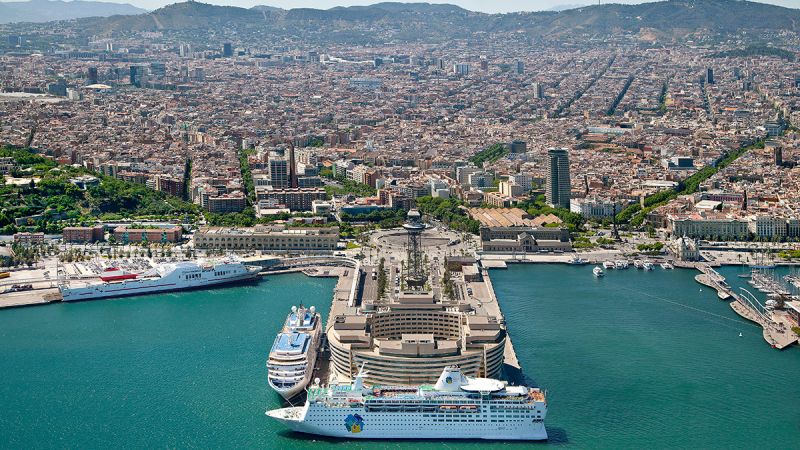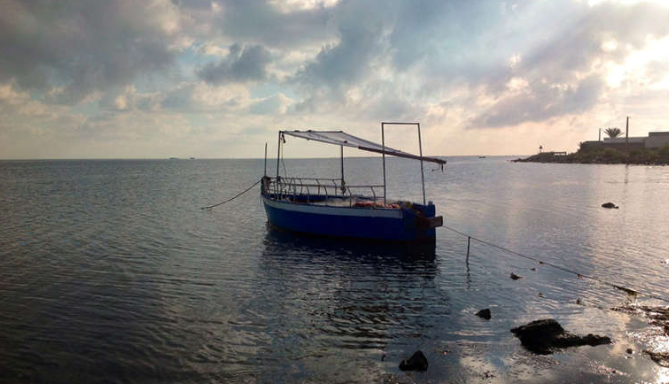Thanks to its strategic location at the crossroads of three major maritime passages, namely the Strait of Gibraltar (which opens to the Pacific Ocean and the Americas), the Suez Canal (main navigation gateway which connects South Asia -East via the Red Sea), and the Bosphorus Strait (which leads to the Black Sea and Eastern Europe as well as Central Asia), the Mediterranean Sea remains the world’s leading tourist region. It also stands out for its enormous potential in terms of climate, landscapes and attractive heritage.
Nevertheless, it is safe to say that the region is a thousand miles away from exploiting its full potential. While certain countries in the Mediterranean basin are structuring themselves to boost an already significant number of visitors, others with enormous potential are barely opening up to tourism.
Thus, much remains to be done to develop this tourism sector in the Mediterranean essentially through the promotion and improvement of maritime transport, not only by focusing on its strong points, namely those of cruises and pleasure boating (whether through small ships or yachts of different sizes), but also through the transport of passengers from one country to another from the shore for tourist purposes.
Especially since, compared to air, rail and road transport, maritime transport remains an inexpensive, energy-efficient and safe mode of transport. Which will make it, according to many observers, the most popular mode of transport in the Mediterranean. It also benefits from the advantage of the short duration of travel from one country to another.
The Mediterranean, a center of global tourism
To have a faithful overview of the realities varying according to the potential of each sub-region of the Mediterranean, it is first necessary to take into consideration that its basin is divided into four distinct geographical sub-regions, each having its own potential, its geographical characteristics and other notable features:
-The countries of the northwest Mediterranean (Spain, France, Italy and Malta) where tourism development is already mature.
-The countries of the north-eastern Mediterranean (Greece, Cyprus, Albania, Bosnia-Herzegovina, Croatia, Montenegro, Slovenia), which are experiencing a revival and experiencing a real “tourist boom” as emerging or resilient destinations.
– The countries of the southwest of the Mediterranean (Tunisia, Morocco, Algeria and Libya) where only the first two have developed cruise tourism and marinas, while the other two, although rich in enormous potential , suffer from a lack of infrastructure and are penalized by their very late opening to the international tourism market.
-The countries of the south-eastern Mediterranean (Turkey, Egypt, Lebanon, Syria, Palestine and Israel) where only in Turkey and to a lesser extent Egypt, where maritime transport for tourist purposes continues to develop without being affected by security problems and penalizing internal policies in the sector.
Cruises in the Mediterranean: A success to be consolidated
The Mediterranean basin is the first (and certainly the oldest) tourist area in the world, receiving more than 270 million tourists each year. It represents a quarter of global hotel capacity, 30% of global tourism revenues and flows and 40% of international arrivals. The sector is the source of nearly 10% of jobs in the area.
The Mediterranean region has, in fact, experienced a significant and rapid increase in cruise ship movements over the last two decades. It has established itself as the second largest cruise region in the world, after the Caribbean (with 15.8% of the deployment of the global cruise fleet).
With around fifty ports that can accommodate cruise ships, including 36 ports considered major and able to accommodate more than 120,000 passengers per year, including obviously that of Barcelona (the leading port for cruises in the Mediterranean and Europe), the sea The Mediterranean is experiencing a boom in the cruise sector, thanks to the attractiveness of its port cities, as well as the purchasing power of the populations living in the area concerned.
Located at the crossroads of three continents, the Mediterranean is bordered by several mountain ranges sinking into the sea, creating peninsulas, capes and large bays suitable for navigation. It is also dotted with islands of all sizes in a narrow space, bordered by numerous states. Also equipped with necessary infrastructure (ports with passenger terminals, hotels), the Mediterranean port cities of Barcelona, Rome, Venice, Naples, Palermo, Athens, Salonika, Limassol, Larnaka, Tunis, Valletta, Marseille, Antibes, St. Tropez, Corsica , Istanbul, Izmir, Antalya, and Tirana… (to name just a few), are very popular with cruise lines.
Another strong point favoring this exponential development of cruises, the Mediterranean constitutes an almost ideal basin for navigation, because it is almost closed, associated with a temperate, mild and warm climate, which allows the operation of the cruise offer for the majority of the year.
In fact, companies can plan navigation for nine months a year, or sometimes more.
Growth opportunities for the area remain enormous
Although being the leading tourist region on the planet, the Mediterranean has not yet exploited its full potential and the growth possibilities are enormous by focusing on this maritime transport.
To do this, we must first work on the image of cruise tourism by rejuvenating it and investing in vast promotional campaigns, while insisting on the fact that it is not a luxury product reserved only for to a senior citizen clientele.
We must also enrich and diversify the region’s offering to make it more attractive and give it a new appeal.
In addition to the traditional centers around the Mediterranean, the Balkans, Algeria and Libya can present new destination offers. And this, thanks in particular to local public or private investments (Russian, Chinese or Turkish) which attempt to exploit the natural environment of the Balkan region (coastline and islands of Croatia; but also the Bulgarian seaside resorts) and the exceptional heritage of Algeria or Libya (Roman remains, desert, thermal spas, 2000 km of coastline for the first country mentioned and 1200 for the second), often intact, which represents an enormous competitive advantage, in the era of sustainable tourism.
This tourism; much more developed in the northern part of the Mediterranean, which is also characterized by its very strong concentration around a few natural or cultural sites, which have benefited from heavy investments, as evidenced by the development of infrastructure and hotel complexes; therefore needs a rapid expansion of the tourist area towards the south where infrastructure and transport networks must be consolidated.
The Mediterranean must also establish itself as the most popular and safest destination for pleasure boating. This vast and heterogeneous sector comprising both small vessels (< 24 m) and large vessels (yachts > 24 m and mega-yachts > 34 m), which is attractive for its seascape, its bays and its islands, as well as as well as by the high number of facilities for nautical activities, mainly located along the coasts of the north-west facade of the basin, (800 marinas in Italy, 291 in Spain, 184 in France and 13 in Malta).
The Mediterranean has, moreover, all the assets to develop the maritime transport of passengers between the various cities often close to its basin, especially since sea travel is an inexpensive, energy-efficient, safe and accessible mode of transport for practically all year.
To develop this sector, we must increase the number of ports on the southern shore of the Mediterranean basin, with all that this implies in terms of infrastructure and services. In this context, we must seduce the traveler and give them confidence, not only by improving the quality of services, but also by guaranteeing the necessary security in all ports around the Mediterranean, which must become a more stable area.
The challenges are therefore numerous for the promotion and improvement of maritime transport in the Mediterranean for tourism purposes within the framework of sustainable development: sustainability, geo-political change, security, increased competition, change in consumer profile, technological innovations to save energy.. .
And it is up to governments and professionals to adapt to diversify and enrich the Mediterranean tourist offer, giving it a new appeal within a framework of sustainable development which takes into consideration its environmental and health costs.




